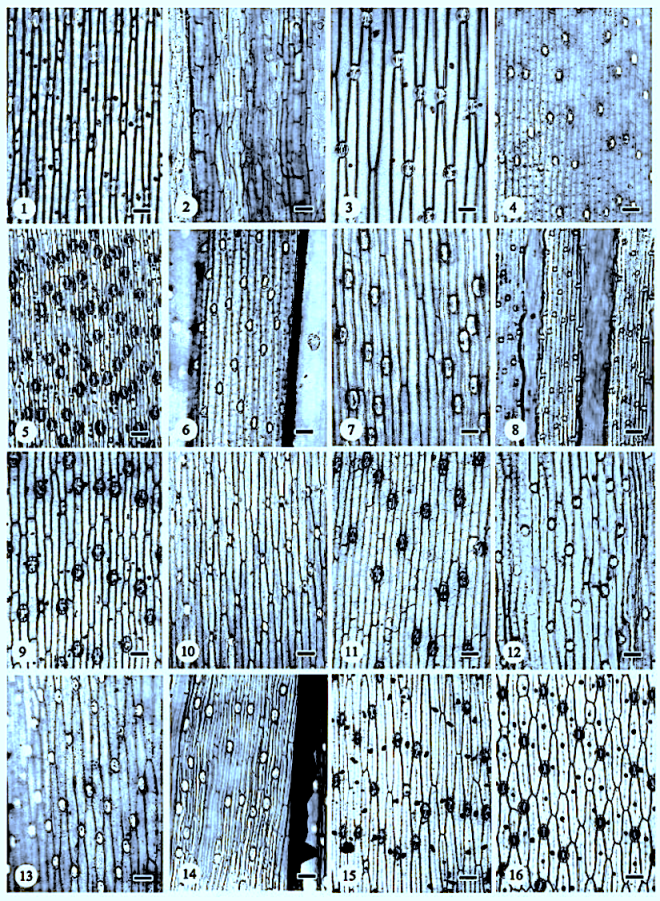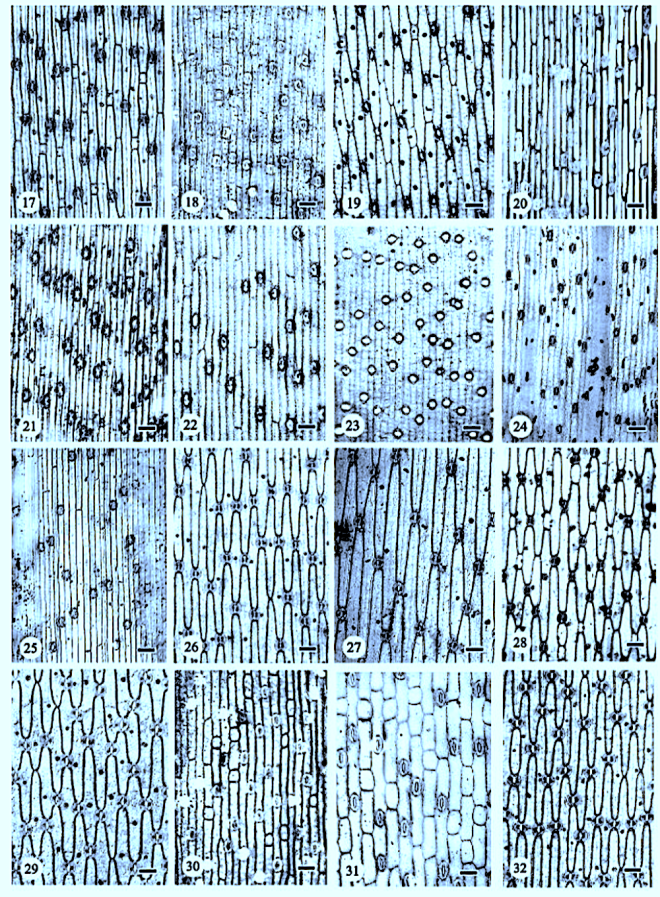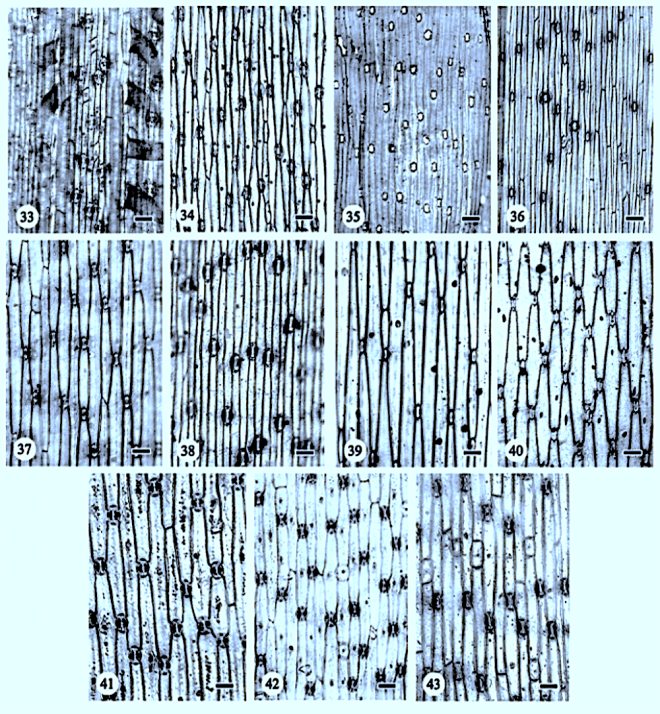
The taxonomic significance of leaf epidermal micromorphological characters in distinguishing 43 species of Allium L. (Amaryllidaceae) from central Asia
by Lin C.-Y., Tan D.-Y. (2015)
Chen-Yi LIN, 1,2 AND Dun-Yan TAN, 1*
1 Key Laboratory of Western Arid Region Grassland Resources and Ecology, Ministry of Education, China; Xinjiang Key Laboratory of Grassland Resources and Ecology; College of Pratacultural and Environmental Science, Xinjiang Agricultural University, Ürümqi 830052, China
2 College of Forestry and Horticulture, Xinjiang Agricultural University, Ürümqi 830052, China
===
in Pak. J. Bot. 47(5): 1979-1988 –

Abstract
The genus Allium is comprised of more than 800 species, and although previous studies have been useful in identifying the species, there is a paucity of easy-to-observe morphological characters with which to distinguish them. Thus, we determined the micromorphological characteristics of the leaf epidermis of 43 species of Allium from Central Asia using light microscopy and evaluated their taxonomic significance.
Our study examined variability in epidermal cell shape and size and the stomatal apparatus.

The stomatal apparatus is ellipsoid, anomocytic and amphistomatic. The shape (rectangular or rhomboid) of epidermal cells, pattern (straight or arched) of anticlinal walls, and stomatal index are stable within a species, while there are differences among species that allow for species delimitation. Based on the shape and pattern of anticlinal walls of leaf epidermal cells, the 43 sampled species could be divided into three distinct types of epidermal cells: type 1, rhomboid cell shape and straight anticlinal walls; type 2, rhomboid cell shape and arched anticlinal walls; and type 3, rectangular cell shape and straight anticlinal walls.
These leaf epidermal micromorphological characters prove to be the taxonomic significance in distinguishing and delimitating species in Allium.